CLASSIFICATION OF THE METAMORPHIC ROCKS
Hello friends, lovers of the science of geology, in this present publication I will give continuity to the knowledge of the classifications of the types of rocks that occur in the terrestrial surface, as well mentioned in the previous publication talk about detrital sedimentary rocks, well Today I will talk about the classification of metamorphic rocks. I will give a brief summary of what are the metamorphic rocks, I will explain how they are classified and I will briefly show a variety of the most common types of metamorphic rocks, these illustrative images will be accompanied by a particular content of each image, as a sample of the educational way, so that all of you can inquire about this very important content for the knowledge of geological science, now I invite you to observe this interesting publication.
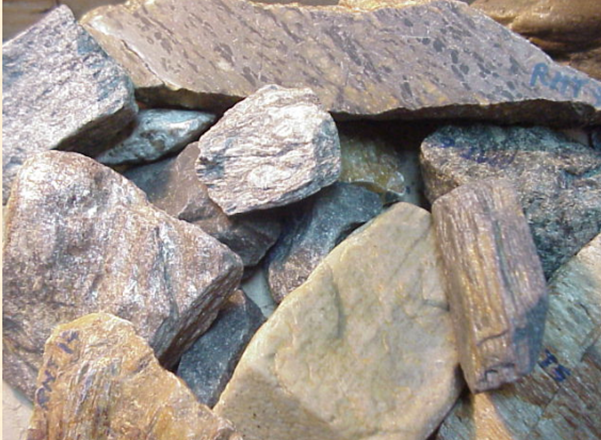
Short summary
What are the Metamorphic Rocks?
As we all know, rocks are formed as a result of the dynamic and erosive processes that occur constantly in the earth's crust, since metamorphic rocks are formed from the formation of igneous, sedimentary rocks or even from other metamorphic rocks. This formation process is known to us geologists as metamorphism, which is a process where a change of mineralogy and texture is produced, produced by the alteration or change of environment of this type of rocks, when the rocks undergo a physical change or chemical different from its initial formation, this process occurs, the factors that cause metamorphism to develop in the extracts of the rocks are heat, pressure and the presence of chemically active fluids. Metamorphism usually progresses incrementally as the particles undergo slight changes is its structure, which is why we call metamorphic rocks as high grade or low degree of metamorphism.
CLASSIFICATION OF METAMORPHIC ROCKS
To classify the metamorphic rocks it is necessary to know their texture, their mineralogy and also to deduce from the latter, what are the pressure and temperature conditions of their formation, it is also important to recognize if the texture is foliated or not foliated, starting from knowledge of the types of metamorphisms that can occur in rocks, these can be classified as follows:

Some types of Metamorphic Rocks
ROCA PIZARRA
It is a rock that comes from a very low grade metamorphism, this type of rocks have an internal foliation, which is called mircoscopic, although its external surface shows a massive structure, you can see the foliate planes, which are banded millimetrically, The geometry sample presented by the sample is limited by two large flat faces, product of the texture of the sample. The color of this type of rocks depends on the dominant mineral that also presents the alteration processes that the present sample, the most frequent colors are brown green, as observed in the sample, this indicates that the dominant mineral is chlorite, the reddish tones observed on the lateral faces are the product of the superficial oxidation processes originated by external agents.
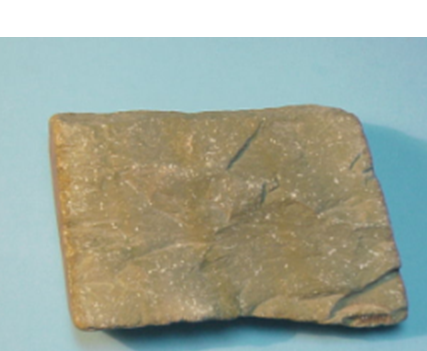
FILITA
It is a metamorphic rock that presents a low degree of metamorphism, product of the sediment load, the planes of foliation are observed at first sight due to the increase of the size of the crystals micaceos that compose them. The planes that make up this rock are of a bright tone, presenting undulations on the surface, also presents an intense black color, this shows that it has a high content of graphite, which is a mineral from the metamorphism of organic matter.
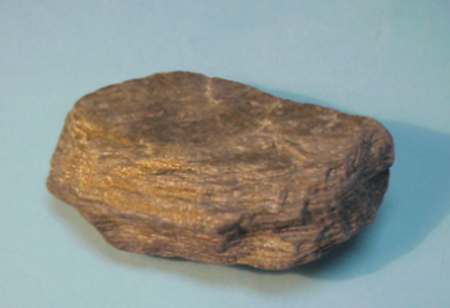
SCHOOL MICKEY
It is a metamorphic rock that presents an average degree of "dynamo-metamorphism". In this presented sample the foliated planes can be observed, unlike the phyllites, in this sample the minerals are very visible, the minerals that this sample presents are: the bright particles micas Muscovites and the darker tone biotites, also possesses grainblasts of quartz elongated grayish color. On the surface of the foliation planes a characteristic texture is observed that only appears in this rock called "lepidoblastica".
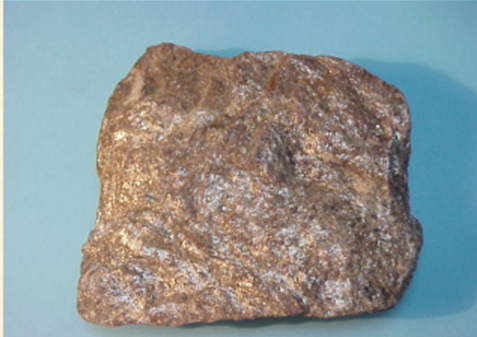
METACONGLOMERADO
Conglomerate of quartz and slate rims filled with a clay-sandy matrix that has undergone a metamorphism of medium degree, what we know in geological science as "dynametamorphism". Observe in the presented sample how the quartz and slate edges have been lengthened, thus showing a banded texture. This sample could be considered as a quartzitic esquis of very coarse grain, if we observe well the sample it can be seen that the unpolished surface is clearly a foliasion concordant with the internal banding. The ridges of cuazo can be observed as grainblasts surrounded by a micaceous matrix, which is adapted to an external morphology.
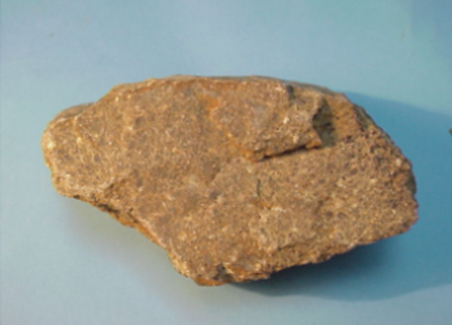
SERPENTINITA
Rock composed of metamorphosed oceanic crust. Produced from an ophiolitic complex in the subduction zone of the Hellenic Arc. It presents characteristic green tones, unctuous touch and satiny surface.
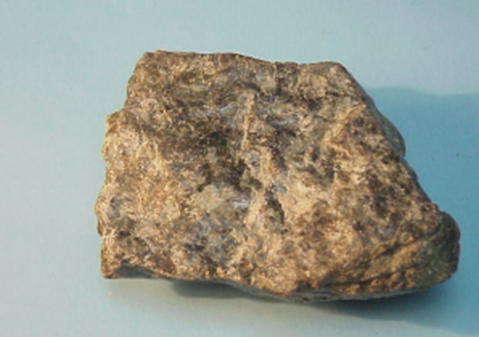
MILONITA
Dynamic metamorphism rock, generated in a ductile shear zone. It is a micaceous schist similar to the previous ones, milonitized. Observe the characteristic folds and creases of the foliation planes formed by dragging processes inside the shear zone. Large Biotite and Quartz granules are observed surrounded by folded micaceous mariz.
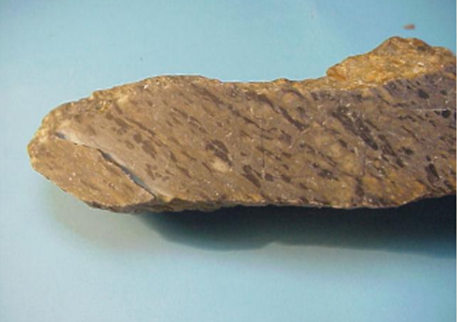
SERPENTINE
It is a rock composed of the following minerals: antigorite, chrysotile and lizardite, with talc and chlorite as fundamental accessory minerals. They usually come from the alteration of olivins and pyroxenes present in the basic ingeous rocks. Their colors, although varied, are essentially greenish (as in the case of the present sample), which presents a satiny surface and is unctuous to talc. It has medium hardness.
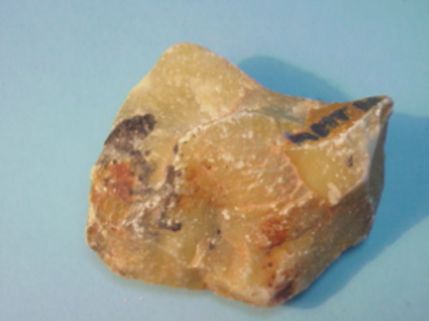
CORNEANA
Previous rocks of high temperature metamorphism, of the contact metamorphism aureoles that form around the large granitic plutons. It has a grain-like crystalline texture, lacking schistosity, very fine grain and conchoidal fracture. Aluminum silicates, such as distena, can form large porphyroblasts, as occurs in the sample of the collection.
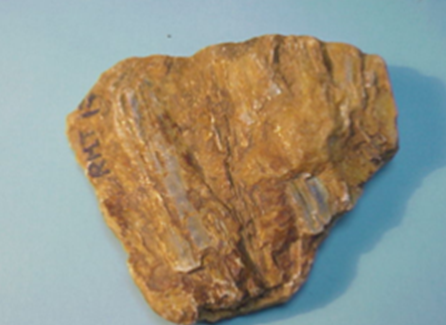
References Bibliography :
- https://en.wikipedia.org/wiki/Metamorphic_rock
- https://geology.com/rocks/metamorphic-rocks.shtml
- https://www.thoughtco.com/metamorphic-rock-types-4122981
- Metamorphic Rocks (2016). Geological Sciences. International Institute of Geology Engineering (I.I.I.G)
- YARDLEY, MCKENZIE AND GULFORD. Metamorphic rocks and their texture .pp 145-150.
To read more about us and what we do, click here.
https://steemit.com/geopolis/@geopolis/geopolis-the-community-for-global-sciences-update-4
If you do not want us to upvote and comment on your posts concerning earth and earth sciences, please reply stop to this comment and we will no longer bother you with our love ❤️
You got a 1.43% upvote from @mercurybot courtesy of @lisbethferrer!
This post has received a 1.07% upvote from thanks to: @lisbethferrer.
thanks to: @lisbethferrer.
For more information, click here!!!!
Send minimum 0.010 SBD|STEEM to bid for votes.
Do you know, you can also earn daily passive income simply by delegating your Steem Power to @minnowhelper by clicking following links: 10SP, 100SP, 500SP, 1000SP or Another amount